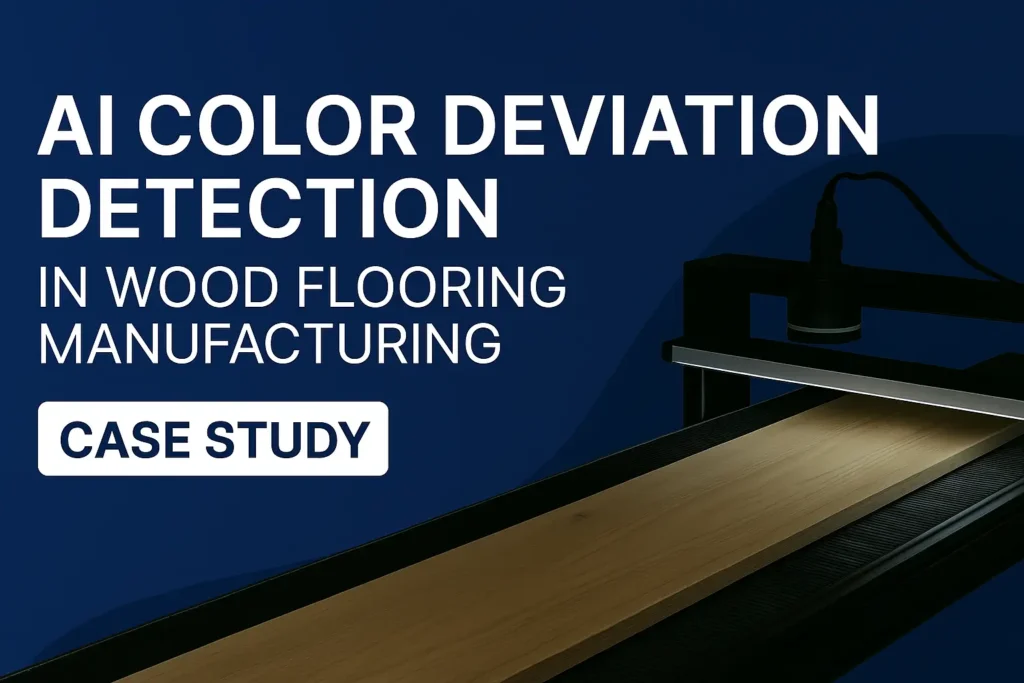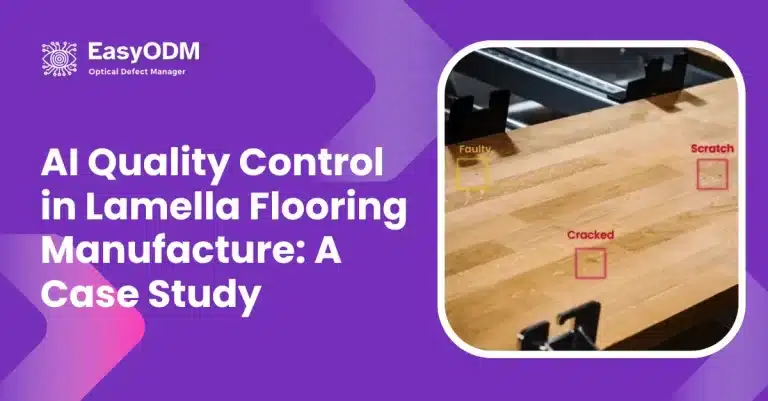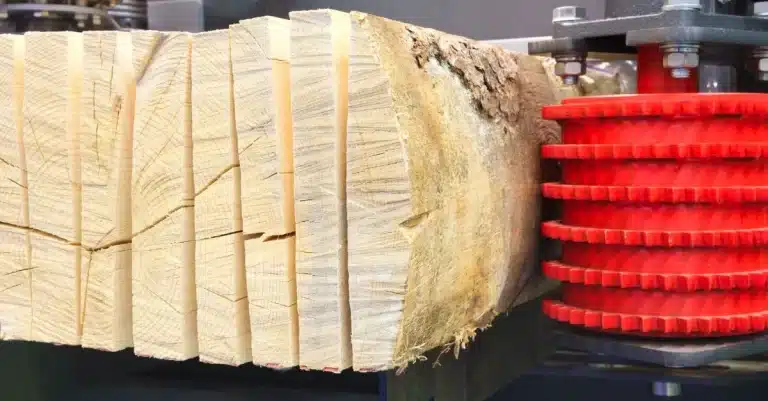In the highly competitive wood flooring market, visual perfection is non-negotiable. A single plank with slight color variation can lead to rejected orders, brand reputation risks, and increased waste.
While many manufacturers still rely on human inspection to control surface quality, it’s becoming clear that manual methods can no longer keep up — especially when dealing with high production volumes and fine visual tolerances.
This case study outlines how EasyODM helped a leading global flooring manufacturer solve the problem of color deviation detection using an AI-powered visual inspection system.
The Challenge: Subtle Color Deviations Were Slipping Through
In premium wood flooring, color consistency defines quality. When planks don’t match, even slightly, the consequences ripple down the value chain — from line stoppages to dissatisfied end customers.
Manual inspection teams struggled to spot gradual or low-contrast deviations. Their accuracy varied across operators and shifts, and the process slowed down as volumes grew.

The Goal: Automate Visual Inspection for Color Deviation
Our client needed a system that would:
- Detect even the smallest color mismatches in real-time
- Maintain uniform performance across multiple tones and product types
- Eliminate reliance on human consistency
- Fit seamlessly into their production environment
The Solution: AI-Based Color Matching and Deviation Detection
EasyODM deployed a computer vision solution built specifically for color deviation analysis in natural wood textures.
How it works:
- The system captures each plank with a high-res industrial camera.
- It identifies defect-free areas to create a master color profile.
- Each new plank is scanned and divided into tiles, compared tile-by-tile against the master profile.
- A sensitivity setting defines what counts as a deviation, giving QC teams full control.

Results: 95–99% Defect Detection Accuracy
During lab and pre-production phases, the system achieved:
- 95–99% accurate defect detection, validated across multiple wood tones
- Fast, real-time operation suitable for production-line integration
- Reliable detection of gradual color shifts and hard-to-spot mismatches

Manual Inspection vs. AI: The Quality and Consistency Gap
In side-by-side testing, EasyODM’s AI system consistently outperformed human quality inspectors across every key metric — not only in speed and precision but also in long-term reliability and traceability.
| Aspect | Manual Inspection | EasyODM AI System |
|---|---|---|
| Color Deviation Accuracy | Depends on human perception; subtle or gradual deviations are often missed, ˜70% | Achieves 95–99% accuracy using objective color profiling and pixel-level analysis |
| Speed | Slower, limited by fatigue and attention span; typically a bottleneck in fast lines | Real-time analysis of every plank without slowing production |
| Consistency | Varies across shifts, inspectors, or lighting conditions; prone to subjective judgment | Delivers standardized decisions 24/7, regardless of external factors |
| Traceability | Very limited — visual inspections are not recorded or reviewable | Every NOK result is image-logged and auditable, enabling quality reports and root-cause analysis |
| Scalability | Requires more trained staff as production grows | Scales with production effortlessly — just duplicate the hardware |
| Training & Ramp-Up | New inspectors require time and practice to identify all defect types | AI requires only initial calibration — no retraining needed per shift |
Implementation: From Pilot to Production
| Phase | Description | Outcome |
|---|---|---|
| 0 | Single-camera pilot | Defect types successfully identified |
| 1 | Full-width PoC in lab | >95% detection accuracy |
| 2 | On-site testing | Ready for inline deployment |
| 3 | Full production integration | Live on one line |
| 4 | Scale across multiple lines | Enterprise rollout roadmap |
Deployment Flexibility
EasyODM supports two operation modes:
- Operator-in-the-loop for quick setup and human oversight
- Fully autonomous mode for scale and labor-free operation
Both models provide visual traceability and adjustable thresholds to suit product variations.
Business Impact
- Fewer product rejects
- Uniform inspection across shifts
- Faster quality control cycles
- Reduce hiring and training costs
- Stronger brand reputation for consistency
- Lower costs from rework and waste


